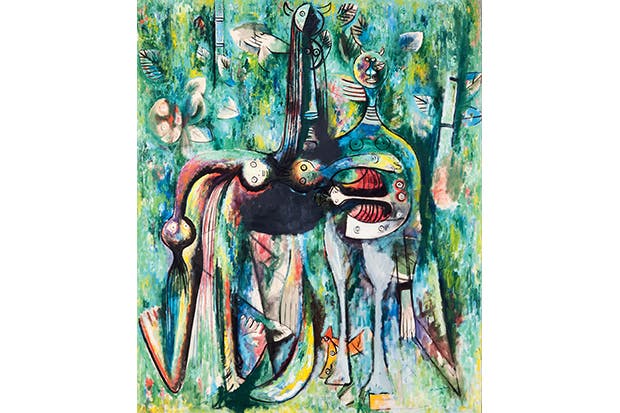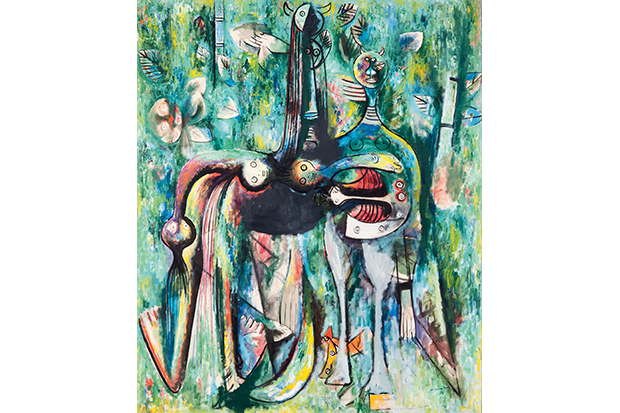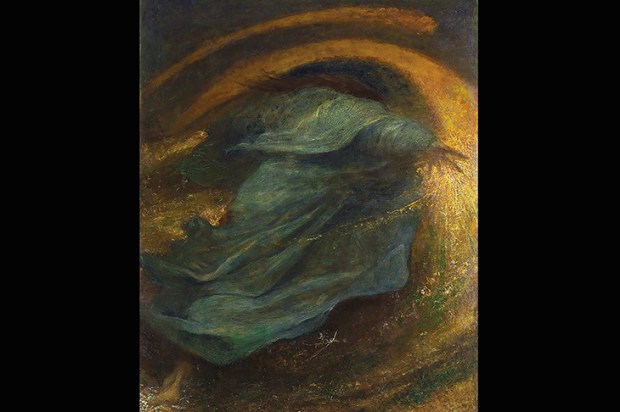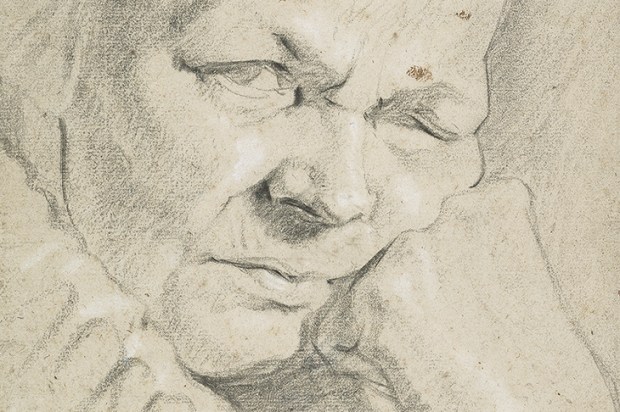‘My painting is an act of decolonisation,’ declared Wifredo Lam. These are the first words you read on entering the retrospective of his work at Tate Modern. But I must say that both Lam and Tate got this statement 100 per cent back to front. On the contrary, Lam’s work strikes me as entirely a product of colonialism. It’s none the worse for that, but it’s not any better either.
Lam (1902–1982) was originally from Cuba. His father, Enrique Lam-Yam, had emigrated from China and his mother, Ana Serafina, was of mixed African and Spanish descent. He was, in other words, a rather typical inhabitant of the new world. And the rich fusions of that milieu have produced such cultural wonders as Afro-Cuban music and, across the Gulf of Mexico in Louisiana, jazz. Some distinguished artists have come from similar backgrounds: the great Frank Bowling RA comes to mind, born in Guyana but resident in London now for half a century and more.
Lam, sadly, was not one of these. As this show makes exhaustively clear, he was a second-string member of the school of Paris. Almost all his mature work was heavily derivative, the overwhelming influence being Pablo Picasso. Furthermore, after departing for Madrid at the age of 21 he spent almost his entire adult life in either Spain or France.
True, he returned to the Caribbean at the outbreak of the second world war, but he went back to Europe when the dictator Fulgencio Batista came to power in 1952. Apparently, Lam was more sympathetic to the subsequent Castro regime, but he did not take this enthusiasm so far as actually to move back to Havana (and who can blame him?).
Artistically, Lam was not always a follower of Picasso. Some of the earlier pieces on show have a look of Dalí, and several from the mid-1930s — including two self-portraits — reveal the heavy influence of Matisse. After fighting on the Republican side in the Spanish Civil War, however, he escaped to Paris where he met Picasso, visited his studio and was pulled into his orbit.
He never subsequently attained exit velocity. There are moments — especially in the late-1950s, when Lam briefly tried a variant on abstract expressionism — at which you hope he’s made a getaway. But it didn’t last.
The full force of Lam’s conversion to Picasso, however, was slightly delayed and became evident only after his temporary return to the Americas — and to begin with he showed more independence. As a painter, he had his moments, and they were mainly in the early 1940s. At that point, he was doing something somewhat original with the idiom of ‘Guernica’ — which was his main inspiration.
For a while, instead of the bleak monochrome of Picasso’s picture, Lam used hot, tropical colours. There is a hint of Cézanne’s soft iridescence here and there. Unfortunately, Lam’s masterpiece — ‘The Jungle’ (1943) — is now too fragile to travel, so the Tate exhibition lacks what would have been its high point. In any case, after a while Lam moved to a sombre palette of blacks, greys and browns, which he retained for the rest of his life.
He stayed more or less with the same idiom too, which was a mixture of Picasso’s post-‘Guernica’ manner with some elements — particularly the masks lifted from African tribal art — from an earlier period of the master’s work: the era of ‘Les Demoiselles’. The argument of the exhibition is that, given his ethnic background, it was a very different matter for Lam to borrow this imagery.
Surely, though, what he was doing was exactly the same as, say, what Gauguin did. That is, to fit gods and stories from a certain religion — Polynesian in Gauguin’s case, Cuban Santería in Lam’s — into the visual language of European modernism. So — it seems to me — his art was not ‘an act of decolonisation’; on the contrary, it clearly belongs to the colonial era.
None of this would matter if the pictures were better. There was no shame in being influenced by Picasso. The gigantically talented Spaniard cast a huge shadow over the art of the 20th century. As another Tate exhibition made unkindly clear a few years ago, many British artists struggled ineffectually to escape (Henry Moore, like Lam, based his work on one corner of Picasso’s vast output). Large exhibitions are cruel things. They make inadequacies and repetitions obvious. A small room of pictures by Lam might have made him look interesting; this large display ends up making him seem smaller.
Got something to add? Join the discussion and comment below.
Get 10 issues for just $10
Subscribe to The Spectator Australia today for the next 10 magazine issues, plus full online access, for just $10.














Comments
Don't miss out
Join the conversation with other Spectator Australia readers. Subscribe to leave a comment.
SUBSCRIBEAlready a subscriber? Log in